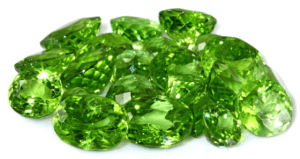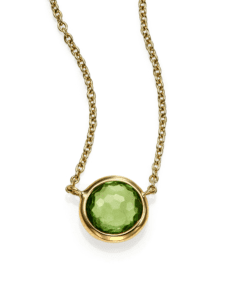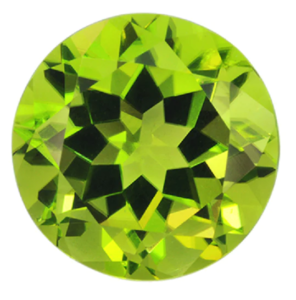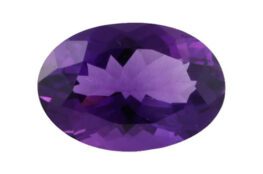
Peridot, a captivating green gemstone, holds a significant place in the world of precious stones. Known for its vibrant green color, peridot is a magnesium-rich variety of the mineral olivine. With its distinctive hue and remarkable properties, peridot has fascinated civilizations throughout history.
Cultural and Historical Significance of Peridot
Ancient Egyptians admired peridot as the “gem of the sun” and often used it to adorn their jewelry and religious artifacts. The gemstone was associated with protection and good fortune, symbolizing vitality and rebirth. In Hawaiian culture, peridot was considered the tears of the volcano goddess Pele and was believed to possess healing powers. Beyond its cultural and historical significance, peridot plays a vital role in the gemstone industry.

Symbolism and meanings associated with peridot add depth to its allure. In addition to its cultural significance, peridot holds astrological and spiritual significance. Linked to the zodiac sign of Leo, it is believed to enhance qualities such as courage, confidence, and personal power. Peridot is associated with the element of Earth, aligning it with attributes like grounding, abundance, and growth. This gemstone is valued for its purported healing and metaphysical properties, believed to promote emotional well-being, harmony, and balance. It is thought to strengthen relationships, foster forgiveness, and inspire spiritual growth and manifestation.
Physical Characteristics of Peridot
The physical characteristics of peridot contribute to its enduring appeal. Its vibrant green color ranges from yellowish-green to olive green, captivating the eyes of those who behold it. Peridot often exhibits excellent transparency, allowing light to pass through with minimal obstruction. However, natural inclusions, known as “lily pads” or “peridot lily,” can occasionally be seen within the gemstone. With a hardness of 6.5 to 7 on the Mohs scale, peridot offers durability suitable for everyday wear, minimizing the risk of scratches and abrasions. Its vitreous luster adds a brilliant sheen when polished, and it possesses a specific gravity slightly higher than that of an average gemstone. Most peridots don’t normally receive treatments.

Sources and Geographical Influence on Peridot
Peridot can be found in various locations around the world, each offering its own unique qualities. Egypt, Pakistan, Myanmar, and the United States are notable sources of peridot. The island of Zabargad in the Red Sea held particular significance in ancient times, producing highly valued peridot gemstones. Other regions, like Kohistan in Pakistan and the Mogok region in Myanmar, have yielded exceptional peridot specimens. The geographic origin of peridot can influence its color and quality, contributing to variations in value and desirability.
Market Dynamics and Pricing of Peridot
The pricing and business aspects of peridot revolve around various factors that influence its value in the market. These factors include the gemstone’s color, clarity, carat weight, and origin. Peridot gemstones with vibrant and intense green colors, good clarity, larger carat weights, and well-executed cuts are generally considered more valuable. Origin plays a role as well, with certain locations known for producing peridot of exceptional quality, commanding higher prices. Prices can range from 1$ per carat up until a few hundreds.

Peridot in Contemporary Jewelry Design
Peridot’s popularity in the jewelry world is evident in its presence across various designs. It is seen in rings, earrings, necklaces, bracelets, and pendants, adding a touch of natural beauty and versatility to jewelry pieces. Peridot is particularly cherished as the birthstone for August, representing vitality, growth, and good fortune. Fashion trends have embraced peridot, with its fresh green hue complementing contemporary and bohemian styles.
Care and Maintenance of Peridot Jewelry
Proper care and maintenance of peridot jewelry ensure its longevity. Use protective settings for any peridot rings. Avoid settings that place stress on peridots and clean them only with a soft brush, mild detergent, and warm water. They are also sensitive to extreme heat. In addition, Peridots also have some sensitivity to acids, even those found in perspiration. Peridot jewelry should be worn against the skin only occasionally.

